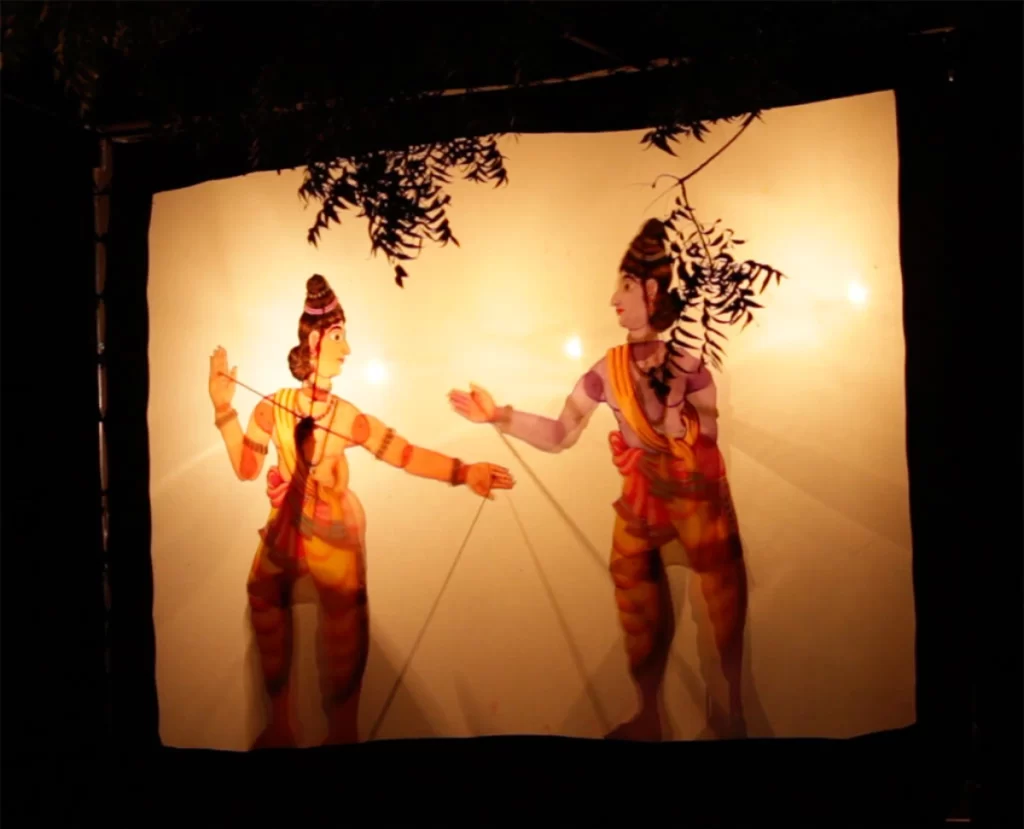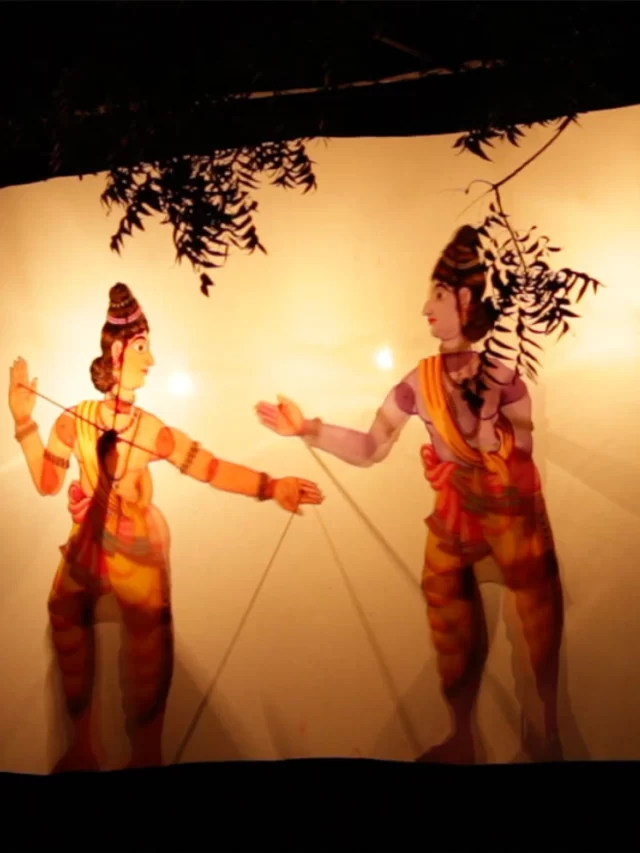Everything There Is to Know about Tholu Bommalata Art
Tholu Bommalata, the leather puppet theatre found in Andhra Pradesh, is a unique tangible and intangible cultural tradition of the nation. They are crafted from translucent goatskin and are grand in size and vibrant in colour. These striking puppets bear intricate details, painted in the brightest colours and adorned with delicate perforations. Known as Tholu Bommalata locally, this traditional art form emerged during the 16th century under the patronage of Vijayanagara rulers.
The Tale of Shadow Puppetry in India
According to legend, a theatrical form known as ‘Chhaya Nataka’ or shadow drama existed during the composition of the ancient epics Ramayana and Mahabharata. This tradition is believed to have originated in Gujarat around a thousand years ago and later migrated to Maharashtra. Over time, the wandering clan carrying this art form spread across different regions of India, leading to its flourishing and expansion. Thus, the tradition of shadow drama evolved and thrived, leaving its cultural imprint in various parts of the country. The states of Karnataka, Andhra Pradesh, Kerala, Tamil Nadu, Maharashtra, and Odisha are the primary regions where the traditional shadow puppet theatre is predominantly performed.

Skilled hands deftly manipulate these puppets, bringing them to life in captivating performances. When experiencing Tholu Bommalata puppetry, one cannot miss the popular depictions of episodes from the epic tales of Ramayana and Mahabharata. A large white cloth, usually measuring 12×9 ft and illuminated from behind by a bulb or oil lamp, serves as the screen. Both sides of the puppet are skillfully painted to enhance its projection, while two bamboo splits provide structure and flexibility. These remarkable puppets can vary in size, ranging from 3 to 6 ft.
Tholu Bommalata Puppet Making Materials
Different materials are used to make these Tholu Bommalata puppets, in this article we shall explore the making of the shadow puppets in Andhra Pradesh. The art of making these shadow puppets rests within Nimmalakunta, nestled within the Anantapur district. A tender belief gracefully precedes its performance: wherever this puppet show unfolds, bountiful rain and prosperity graciously follow. Renowned for its portrayal of historic episodes, Tholu Bommalata art weaves a tapestry of music and dialogues, resonating through the air as skilled artists harmonise their voices with the accompaniment of harmonium and percussive melodies. These dedicated performers embark on arduous journeys from distant villages, converging upon the chosen stage. What appears as mere facial movements unfolds as mesmerising artistry, concealing countless hours of labour by artisans who toil tirelessly, sparing a precious hour to sow the seeds of pure joy and delight.
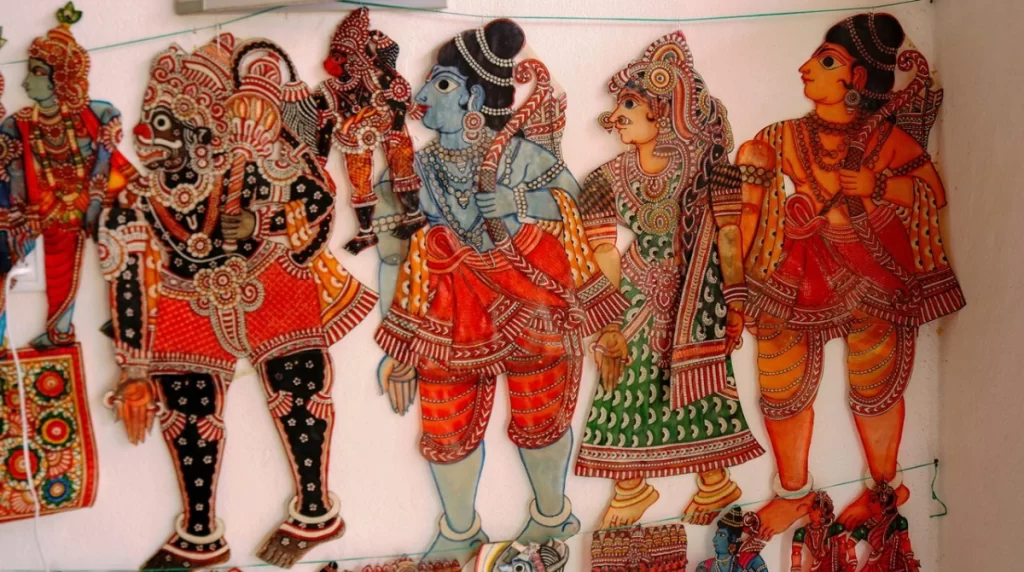
Making of Leather Tholu Bommalata Puppetry
The creation of these Tholu Bommalata puppets is deeply influenced by the social context surrounding the artists. Earlier, skilled artisans would travel from village to village, presenting performances that spanned several days. However, the advent of television and cinema has gradually diminished the popularity of shadow puppetry, making such performances rare and difficult to find.
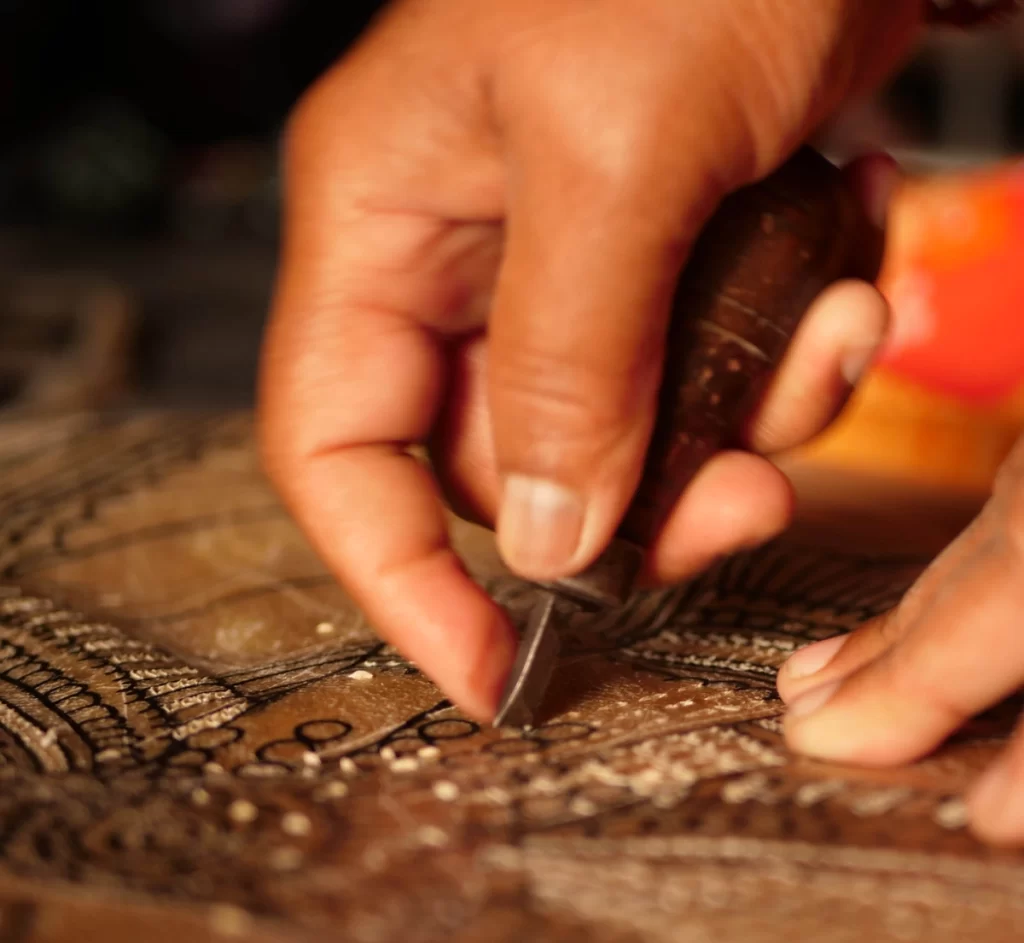
The traditional process of crafting shadow puppets is meticulous, taking around 30-40 days from the procurement of leather to the final product. However, due to various challenges such as water scarcity and the adoption of new materials like chemical colouring, artisans now complete a medium-sized puppet in just two to three days. The process begins with the acquisition of fresh goat hide from the weekly meat market. The hide is soaked in cold water, then washed and dried in the sun. Once prepared, the artists cut the leather to the desired size based on the Tholu Bommalata drawing and the puppet’s requirements.

The goat hide undergoes a laborious process of curing, washing, and cleaning to transform it into a translucent parchment. Following this, the outlines of the puppet figures are carefully marked, and small windows are cut out in the leather. When held against light, these windows reveal intricate details and create a sparkling effect, adding to the puppet’s allure. Next, the Tholu Bommalata puppet figures are outlined using blank ink, while bamboo pens are employed to add finer details. Vibrant colours like red, green, and ochre are applied using ink as a colouring agent. Female figures and sages are often depicted in yellow. Once the colouring is complete, the outlines are retouched in black. To enable mobility during puppet shows, the individual parts of the puppets are cut, stitched together, and mounted on sticks. These puppets are bound with ropes to facilitate movement, enhancing their performance.
History and Future of the Leather Puppetry in Andhra Pradesh
The art of leather puppetry, known as Tholu Bommalata art, was introduced by Sri Krishnadevaraya in the 15th century to disseminate mythological tales among the rural communities of Andhra Pradesh and Karnataka. Unfortunately, this once gleaming tradition has now diminished, currently limited to occasional showcases at government-sponsored events or art exhibitions.
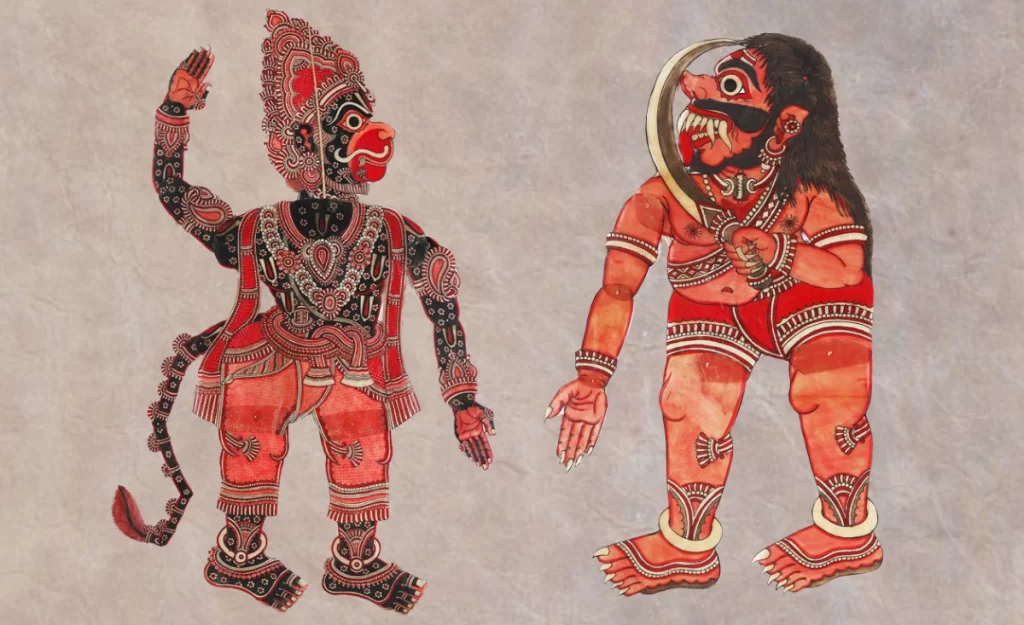
Tholu Bommalata has embraced and adapted to numerous changes in the changing society, making them palpable to the discerning eye. An example of this evolution is the shift from using antelope and deer skin to goatskin for crafting the puppets. However, the changes go beyond materials. It now is displayed and spoken about only in exhibitions. There was a time when the artisans, mostly Telugu-speaking, would venture across the globe to sell their creations. However, the outbreak of the Covid-19 pandemic had a profound impact on the entire artisan community. Many artisans, whose livelihoods relied solely on leather puppetry, were left with no choice but to resort to household chores or seek work in farming fields to sustain themselves.
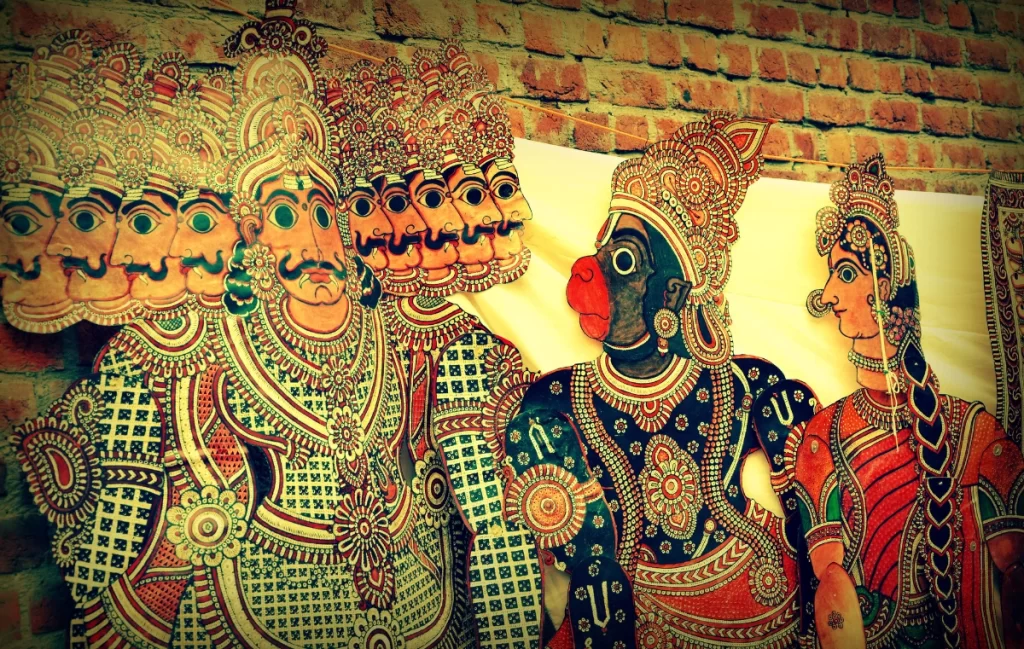
Once a thriving hub for the art form, Nimmalakunta now has only a few families keeping this tradition alive. Out of the 40 families in Nimmalakunta involved in crafting lampshades and puppets, only 10 to 15 families possess the necessary resources and capability to showcase a leather puppet show at any given location. Despite receiving the prestigious geographical indication (GI) tag in 2008, the leather puppetry of Nimmalakunta in Andhra Pradesh has failed to uplift the livelihoods of the artists involved. As a result, these artisans have been compelled to explore alternative avenues such as crafting lamp shades, jewellery, and painted wall hangings to sustain themselves.
Image Courtesy – The Heritage Lab

Contributor

